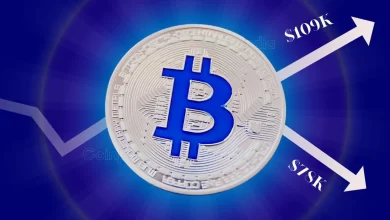Tether froze wallets linked to US sanctions, raising eyebrows and potentially indicating future changes.
Frozen wallets hold little USDT, but some funds moved to untracked wallets before the freeze.
Tether plans to expand its sanctions control to the secondary market, aiming for better regulation.
For almost a decade, Tether cruised along with little attention to rules. However, things took a turn three weeks after the FBI and Secret Service came into the picture. Now suddenly they decide to “proactively enforce OFAC sanctions” and freeze wallets. It’s a surprise move, raising eyebrows as regulators watch closely.
This sudden shift could mean a major change ahead for Tether. And, you guessed it, not a very positive one.
Ramping Up the Security
In a bid to safeguard against potential misuse, Tether, the force behind USDT, took the proactive step of freezing 161 Ethereum wallets associated with individuals on the US Office of Foreign Asset Controls (OFAC) list. The security measure is directly linked to preventing any potential risks related to the sanctioned wallets.
Post-Freeze Wallet Dynamics
Now, here’s the kicker. Reports indicate a grave concern as 150 of the restricted wallets currently show no holdings of USDT, leaving 11 wallets with a collective sum of over 3.5 million USDT. One wallet, notably, holds a significant 97% share of this reserve.
Some wallets still hold USDT after the freeze, with a few carrying 20,000 to 60,000 tokens. While, other wallets hold smaller amounts, including one with just 16% in USDT. Before the freeze, a wallet moved 400,000 USDT via two unblocked wallets, making it challenging to trace these funds as Tether didn’t freeze these intermediaries.
But looking at the flip side, Blockchain investigations also suggest that these frozen tokens might exist across multiple chains, including Ethereum Layer 2 networks. While Polygon showed some limited USDT holdings, Arbitrum and Optimism networks yielded no leads concerning sanctioned wallet balances.
Read More: Tether Doubles Down on Bitcoin: $1.1 Billion Profit and Counting!
Tether’s Policy Expansion
Amidst these developments, Tether’s current wallet-freezing policy applies solely to its platform. However, a strategic shift is in the air, as Tether aims to extend its sanctions control to the secondary market. This expansion seeks to foster better collaboration with government agencies, ensuring a secure environment for stablecoin usage.
CEO Paolo Ardoino, emphasizing a security-driven approach, categorizes this action as a precaution against USDT misuse. He asserts that Tether will freeze both existing and future SDN addresses. Yet, at present, clarity is elusive, as Tether remains silent on the matter officially. Despite the ambiguity, this move underscores Tether’s unwavering commitment to fortify security measures in the face of potential risks.
Here’s Some More Insights: Is Tether’s Stability at Risk? U.S. Treasury Official Sounds Alarm
As the crypto community speaks out, some view Tether’s proactive measures as a positive stride. They believe that this shift might pave the way for wider stablecoin usage, fostering better regulation in the volatile world of cryptocurrency.







